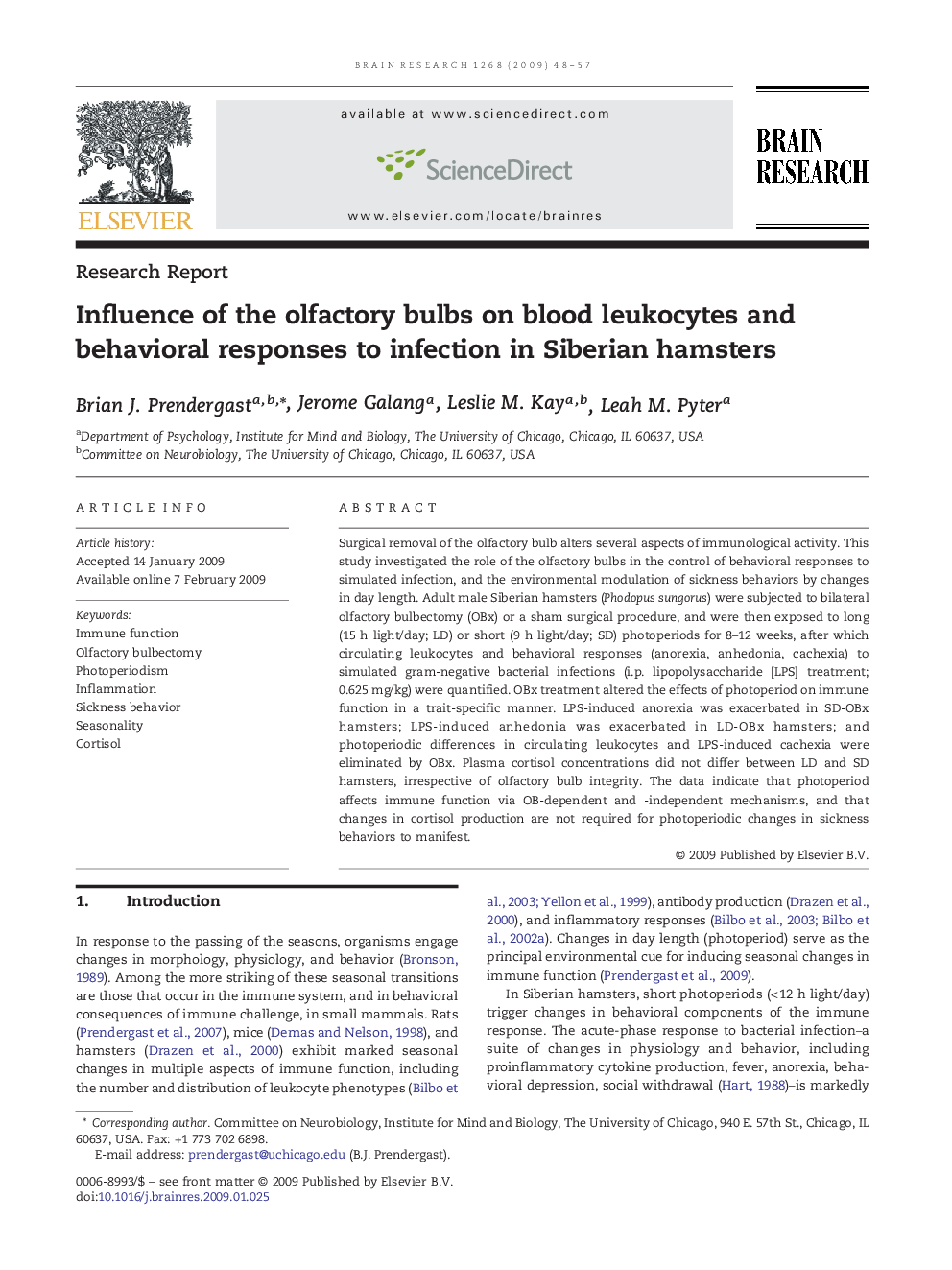| Article ID | Journal | Published Year | Pages | File Type |
|---|---|---|---|---|
| 4328467 | Brain Research | 2009 | 10 Pages |
Surgical removal of the olfactory bulb alters several aspects of immunological activity. This study investigated the role of the olfactory bulbs in the control of behavioral responses to simulated infection, and the environmental modulation of sickness behaviors by changes in day length. Adult male Siberian hamsters (Phodopus sungorus) were subjected to bilateral olfactory bulbectomy (OBx) or a sham surgical procedure, and were then exposed to long (15 h light/day; LD) or short (9 h light/day; SD) photoperiods for 8–12 weeks, after which circulating leukocytes and behavioral responses (anorexia, anhedonia, cachexia) to simulated gram-negative bacterial infections (i.p. lipopolysaccharide [LPS] treatment; 0.625 mg/kg) were quantified. OBx treatment altered the effects of photoperiod on immune function in a trait-specific manner. LPS-induced anorexia was exacerbated in SD-OBx hamsters; LPS-induced anhedonia was exacerbated in LD-OBx hamsters; and photoperiodic differences in circulating leukocytes and LPS-induced cachexia were eliminated by OBx. Plasma cortisol concentrations did not differ between LD and SD hamsters, irrespective of olfactory bulb integrity. The data indicate that photoperiod affects immune function via OB-dependent and -independent mechanisms, and that changes in cortisol production are not required for photoperiodic changes in sickness behaviors to manifest.
